Anstruther Family Crests. Which Anstruther is your family?
You searched for 'Anstruther', but there are 18 families with that name in our historic records. Do you know where your family came from, recognise the name of an ancestor or see your crest? If so, please click on your family from the list below..
SELECT YOUR CREST TO SEE AVAILABLE SILVER
AND REGISTER FOR SALE ALERTS
-
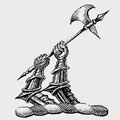 Anstruther
Anstruther
Sir Ian Anstruther of that Ilk, 8th Baronet of Balcaskie…
"Periissem ni periissem"
Select
-
 Anstruther
Anstruther
Henry Torrens, Esquire, of Gillingshill, Pittenween
"Periissem ni periissem"
Select
-
 Anstruther
Anstruther
Hintlesham, Suffolk.
"Periissem ni periissem"
Select
-
 Anstruther
Anstruther
Inverkeithing
"Periissem, ni perstitissem"
Select
-
 Anstruther
Anstruther
Airdrie
Select
-
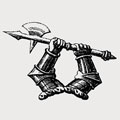 Anstruther
Anstruther
Sir Ralph William, Baronet., of Balcaskie, Pittenweem,…
"Periissem ni periissem"
Select
-
 Anstruther
Anstruther
Lieutenant-Colonel Robert Hamilton, of Hintlesham Hall,…
"Periissem, ni perstitissem"
Select
-
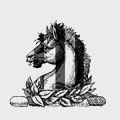 Anstruther
Anstruther
Lieutenant-Colonel Robert Hamilton, of Hintlesham Hall,…
"Periissem, ni perstitissem"
Select
-
 Anstruther
Anstruther
Clan Anstruther- the following crest maybe used by…
"Periissem ni periissem"
Select
-
 Anstruther
Anstruther
Clan Anstruther - badge
Select
-
 Anstruther-Duncan
Anstruther-Duncan
Alexander William, Esquire, of Naughton, Fife, N.B.
"Periissem, ni perstitissem"
Select
-
 Anstruther-Gough-Calthorpe
Anstruther-Gough-Calthorpe
Sir Euan Anstruther-Gough-Calthorpe, 3rd Baronet (created…
"Gradu diverso via una"
Select
-
 Anstruther-Gough-Calthorpe
Anstruther-Gough-Calthorpe
Sir Euan Anstruther-Gough-Calthorpe, 3rd Baronet (created…
"Gradu diverso via una"
Select
-
 Anstruther-Gough-Calthorpe
Anstruther-Gough-Calthorpe
Sir Euan Anstruther-Gough-Calthorpe, 3rd Baronet (created…
"Gradu diverso via una"
Select
-
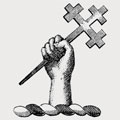 Anstruther-Thomson
Anstruther-Thomson
John, Charleton, Colinsburgh, Fife:
Select
-
 Anstruther-Thomson
Anstruther-Thomson
John, Charleton, Colinsburgh, Fife:
Select
-
 Carmichael-Anstruther
Carmichael-Anstruther
Sir Windham, Baronet., Scotland:
"Toujours prêt"
Select
-
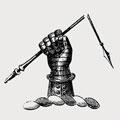 Carmichael-Anstruther
Carmichael-Anstruther
Sir Windham, Baronet., Scotland:
"Toujours prêt"
Select
Anstruther
A brief history of the Anstruther family
The family of Anstruther of Anstruther is very ancient, having settled in Fife in a very early period. Alexander I granted William de Candela the lands of Anstruther in Fife, which includes the famous fishing village of Anstruther, in the early twelfth century.
Nineteenth century research suggests Norman descent in Italy for the Anstruther family. William the Conqueror asked for help from the family’s Norman ancestors. In response, a William, count of Candela in Apulia, sent a son. It is probable that the named recipient of Alexander I’s grant, one William de Candela, was either this son or his grandson. William de Candela was a benefactor of Balmerino Abbey, now in ruins on the edge of Firth of Tay.
However, the name ‘de Candela’ was discontinued by the next generation shown by records of a charter confirming grants to Balmerino describing Henry of the next generation ‘Henricus de Aynstrother dominus ejusdem’.
His son, another Henry, accompanied Louis XI of France on his crusade to the Holy Land. He was made to swear fealty to Edward I not only in 1292 but also on 1296.
The Eighth generation of the Anstruther family, Andrew Anstruther of Anstruther, obtained confirmation of his barony in 1483. He was one of the first Scottish nobles in 1513 to fight at Flodden in Northumberland for King James IV of Scotland against an English force led by The Earl of Surrey. Andrew married Christina Sandilands, a descendent of Robert II, the first monarch of the House of Stewart who reigned 1371-1390.
Andrew and Christina’s eldest son John married a Douglas of Loch Leven, another important Scottish clan. Their grandson was chosen to be a companion of the young King James VI. In 1585 the King appointed him Hereditary Grand Carver, an office still held today by the head of the family. In 1595 he also became Master of the Household.
His elder son, William, following the Union of the Crowns in 1603 after Elizabeth I’s death, accompanied the James VI to England- he was made a Knight of The Bath at the coronation. Both he and his younger brother, Sir Robert, were appointed Gentlemen of the Bedchamber to King James VI. Sir Robert was a Privy Councillor and an able diplomatist, and frequently employed in negotiations of state, by both James I and Charles I. He was sent as ambassador to both Denmark (to borrow money from King Christian) in 1620, and to the Holy Roman Empire 1627-30. King Christian of Denmark complimented him by sending a ship’s load of timber for building his house in Scotland. One of Sir Robert’s tasks was to collect pictures while abroad for the Royal Collection, many of which were dispersed under the Commonwealth.
Sir Robert’s son, Sir Phillip, succeeded his uncle at Anstruther. He fought on the Royalist side in the Civil War, and received Charles II at Dreel Castle, in the parish of Anstruther Easter, after his coronation at Scone 1651. However later that year Sir Phillip was taken prisoner at the battle of Worcester , being fined 1000 merks by Cromwell and having his property sequestered until the Restoration. Sir Phillip had five sons, all of whom were very successful. One was created a Baronet and the other four knights. He died in 1702.
Sir Phillip’s eldest son, Sir William of Anstruther was an MP, Privy Councillor and a Lord of Session (as Lord Anstruther). He married Lady Helen Hamilton and their son, John, became an MP and was created a Baronet of Nova Scotia in 1700. Sir William published a volume of essays and poetry in 1701, against the advice of his friends who decried his literary powers and when he died in 1711 his son, in an act of filial piety, bought and destroyed every copy that could be found. Sir John married Lady Margaret Carmichael, eldest daughter of 2nd Earl of Hyndford. Their grandson was created a Baronet of Great Britain in 1798. His son, Sir John Anstruther of that Ilk, the 5th and 2nd Baronet, added the surname Carmichael upon inheriting the estates of the 6th and last Earl of Hyndford in 1817. This second Baronetcy expired upon the death of the 11th and 8th Baronet , Sir Windham Carmichael-Anstruther of that Ilk in 1980. The Anstruther Baronetcy passed to his kinsman, Sir Ralph Anstruther 7th Bart. of Balcaskie. The Chieftainship of Carmichael passed to his first cousin, 3 times removed, who assumed the name of Carmichael.
Sir James Anstruther of Airdrie, Sir Phillip’s second son, was Advocate and Principle Clerk of the Bills in the Court of Session and his line became extinct upon the death of his son, Lt. Gen. Philip Anstruther.
His third son, Sir Robert, was created a Baronet of Nova Scotia in 1694, acquiring Balcaskie four years later and from him descend the Anstruther of Balcaskie Baronets.
Sir Phillip’s fourth son, Sir Philip of Anstrutherfield married Elizabeth, daughter and heiress of James Hamilton. Their daughter, Christian, married the 6th Earl of Traquair.
Finally, Sir Phillip’s fifth son was knighted Sir Alexander Anstruther. He married the daughter of the famous Civil War General, David Leslie. In 1661 General Leslie was made Lord Newark. This title was restricted to male heirs of his body, therefore sons of Sir Alexander Anstruther and Jean Leslie (General Leslie’s granddaughter) should not have used the title. However their two sons did assume this title, even voting at the elections of Scots representative peers to Parliament. The son of the self styled 4th Lord Newark unsuccessfully claimed the title in 1793.
Sir John Anstruther, 3rd Baronet of that Ilk, published in 1796 a work on drill husbandry. As a friend remarked at the time, no one was better qualified to write the book as “there was not a better drilled husband in the county of Fife.”
The eldest son of Sir Robert Anstruther, 3rd Bart. of Balcaskie (and father of 4th Bart.) had a distinguished military career, rising to the rank of General and took part in the battle of Vimeira and successfully commanded the rear guard during the rear guard to Corunna under the leadership of Sir John Moore. General Anstruther died at Corunna and is interred in the north bastion of the citadel of Corunna, beside (at his own request) his brother at arms and commander in chief, sir John Moore.
A great grandson of General Anstruther of Balcaskie, Sir Fitzroy Hamilton Lloyd-Anstruther, later Anstruther-Gough-Calthorpe (by Royal Licence 1910), was created a Baronet in 1929 and married in 1898, Rachel, eldest daughter and co-heiress of 6th Lord Calthorpe. This Baronetcy is currently held by Sir Euan Anstruther-Gough-Calthorpe, 3rd Baronet. His first cousin, Isabella Anstruther-Gough-Calthorpe has been the subject of much press attention as a result of her relationship with Prince Harry of Wales.
Upon succeeding his kinsman in 1980, Sir Ralph Anstruther, 7th Bart. Of Balcaskie became 12th Bart. Of that Ilk and chief of the name of Anstruther. He was assistant Private secretary (1959-1964) and equerry (1959-2002) to Her Majesty Queen Elizabeth (the Queen Mother) and was succeeded as 8th Baronet of Balcaskie, 13th Baronet of Anstruther, Hereditary Carver to the Sovereign, Hereditary Head of the Royal Household in Scotland and chief of the Arms and Name of Anstruther by his cousin, Sir Ian Anstruther in 2002.
It is unusual for a baronetcy to pass to an heir who was not descended from the original grantee, as in this case (the Baronetcy of Anstruther being created for a nephew of the 1st Baronet of Balcaskie) and it is assumed that it was granted to the heirs male of Sir Philip Anstruther, grandfather of the grantee.
The arms of the Chief of Anstruther are “argent, three piles sable” and the crest is “Two arms in armour holding a pole-axe with both hands gauntleted proper”. The motto is “periissem ni periissem” (I would have perished had I not persisted).
Members of the clan may use the Clan chief’s crest within a belt and buckle inscribed with the motto.
There is some confusion over the motto as Fairbairn’s has it as “Periissem, ni perstitissem” whilst other directories show the 3rd word as “Periissem”. However as Fox-Davies in his magisterial “Armorial Families” has this latter spelling and this is corroborated by the bookplate below we have corrected all our entries accordingly.
The following bookplate showing the arms of Sir John Anstruther of Anstruther Bart. (assumed to be the 1st Baronet). Only the chief of the name is entitled to use the supporters in his arms. The Anstruther suporters are "two falcons with wings expanded proper, beaked and membered gules, belled and jessed Or."
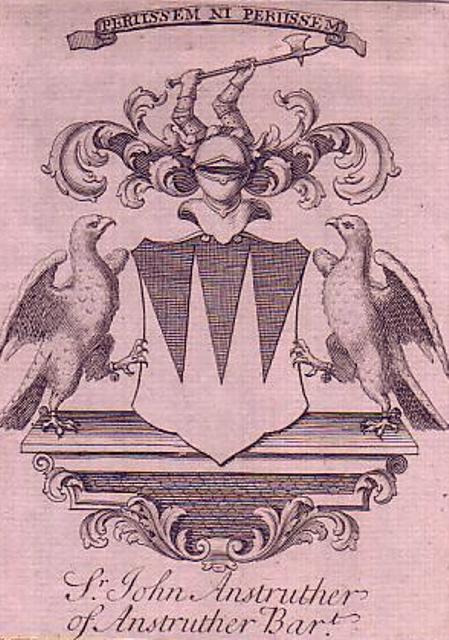
The following image shows the arms of the Anstruther-Gough-Calthorpe’s and is taken from the 1929 edition of Fox-Davies.
Members of the clan may use the Clan chief’s crest within a belt and buckle inscribed with the motto.
It is also worth noting that the position of the pole-axe is not prescribed and examples abound of the pole-axe being held in bend as above and erect (as shown in Burkes Peerage 1997 edition); both of which are correct. As is often the case with heraldry, artistic licence plays it's part.
TD and SNBM
Oct-14
Sources:
The Scottish Nation (1870 edition) by William Anderson
Scottish Clan and Family Encyclopedia (1998 edition) by George Way of Plean and Romilly Squire
Burkes Peerage (2003 edition)
Fairbairn’s Crests (1904 edition)
Armorial Families (1929 edition) by Charles Fox-Davies